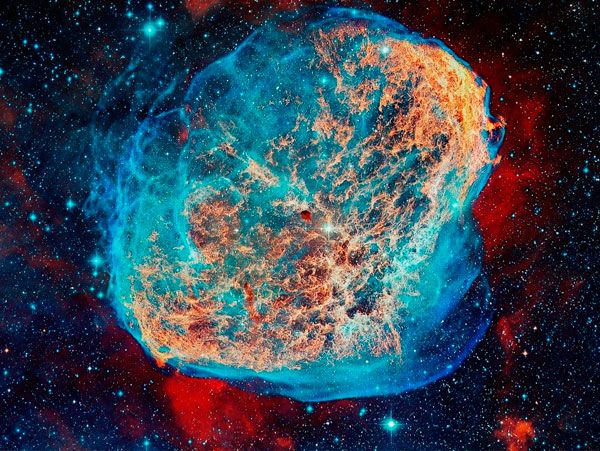Astronomers have recorded the death of the "Sun" from another galaxy
Last reviewed: 16.10.2021

All iLive content is medically reviewed or fact checked to ensure as much factual accuracy as possible.
We have strict sourcing guidelines and only link to reputable media sites, academic research institutions and, whenever possible, medically peer reviewed studies. Note that the numbers in parentheses ([1], [2], etc.) are clickable links to these studies.
If you feel that any of our content is inaccurate, out-of-date, or otherwise questionable, please select it and press Ctrl + Enter.
Scientists-astronomers who process information obtained with the help of the telescopic device "Hubble", demonstrated the latest snapshot of the death of one of the heavenly bodies, similar in features to the Sun known to us.
A snapshot confirming the death of the star was provided by specialists for public review, having been published on the official Hubble website.
According to scientists, they had to actually witness a catastrophe on a cosmic scale: astronomers managed to see so much detail about the death of the heavenly body for the first time. It must be acknowledged that the picture was very clear and detailed: it shows the moment when the cosmic object is transformed into a planetary-foggy state with the naked eye. This process, as experts point out, proceeds with the allocation of a huge amount of dust and gaseous particles, which in scientific circles is called a nebula.
The newly formed nebula (it was called the Hookah, or HE 231.8 + 04.2) is an extremely rare and clear example of the death of a large heavenly luminary. Its location is defined as more than 5,000 light years from the planet Earth: it is the constellation of Korma.
How did the death of a star occur, whose mass is about eight times larger than the sun?
At the final stage of its life cycle, the space object, within which the fuel storage is exhausted, is exposed to the "red giant" process. For reference, the red giant is a star with a high degree of luminosity and with lingering shells. Among the famous stars, Arcturus, Gakruks, Aldebaran, etc. Had such characteristics.
At this stage, an immeasurably enlarged star gets rid of part of its shell, transforming over time into a relatively smaller heated ball. Since matter is heated from the inside, a foggy substance radiates immediately in the entire electromagnetic spectrum, which can not remain unnoticed for various observational telescopic devices.
In this particular situation, scientists were able to see how the particles ejected by the star spread in different directions at a speed limit of about 1 million km / h. In this case, for a short period of time, the nebula expanded to 0.7 light years.

It is assumed that over the next few thousand years the protoplanetary cloud will take on even larger dimensions, turning directly into a planetary nebula.
It is noteworthy that the investigated protoplanetary nebula, in addition to the name of Kalyan, was given another name - the Rancid egg. Scientists explained this fact by the fact that there is a large amount of molecular particles of hydrogen sulfide and sulfur dioxide in the object.
In general, planetary nebulae are original cosmic objects that correspond to the concluding phase of the life of stars, like the Sun. Each such object has a spherical gas shell and an outer stellar layer, which is rejected after losing its stable state. It is difficult to observe such nebulae: they usually have a small surface brightness and a small angular size. Therefore, the information obtained with the help of the Hubble telescope can be considered unique.
